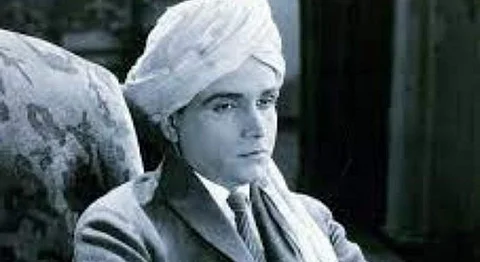
- HOMEGROWN WORLD
- #HGCREATORS
- #HGEXPLORE
- #HGVOICES
- #HGSHOP
- CAREERS
- ABOUT US
- CONTACT US

One of the greatest spiritual teachers in the U.S. was an Indian. Born and brought up in a small village outside Calcutta, Akhay Kumar Mozumdar immigrated to the U.S. in 1904. Much of the curiosity and appeal surrounding him lay in his aura of apparent agelessness, according to an American sports journalist, Lieb, who in his book, Sight Unseen: A Journalist Among the Occult, claimed that Mozumdar had discovered the fountain of youth. A yogi with a nimble physique and a fierce gaze, Mozumdar neither practised magic tricks, nor spewed eastern philosophy as most other yogis at that time did. He had his own personal brand of philosophy called the Universal Messianic Message, which was gleaned together from a number of ancient religious and spiritual texts.
Mozumdar left home at the age of 16, after which he travelled to China and Japan, before reaching Seattle in the United States. Initially, Mozumdar lived for a while with a Swedish family, where he gauged a deeper understanding of the English language and an understanding of Christianity, thereby helping him forge a new perspective on life. Besides, he also got associated with the New Thought Movement in the U.S., which presented an accumulation of thoughts from a variety of belief systems such as ancient Greek, Roman, Egyptian, Chinese, Taoist, Vedic, Muslim, Hindu and Buddhist cultures. It is based primarily on the interaction between thought, belief and consciousness in the human mind, as well as the effects of these within and beyond the human mind. Mozumdar started addressing the public on the ideals and ideologies of this spiritual movement 1908 onwards, but soon realised that being a preacher was not his calling in life. Therefore, he invented and reinvented himself several times, dabbling in a number of professions including a war correspondent, a writer and a lecturer. He taught something called ‘Christian Yoga’, which was a unique blend of yoga and mind control taught from the perspective of the Bible. His numerous spiritual lectures got him a small following at Spokane, Washington and also allowed him to publish a periodical titled, Christian Yoga Monthly, which contributed to the theosophical movement in the U.S. back then.
After having attained fame in America with his lectures and spiritual innovations, Mozumdar applied for becoming a naturalized American citizen and secured it in 1913 from the Ninth Circuit Court in San Francisco. Thereafter, while living in Los Angeles in the mid-1920s, he started working on a film called Beyond the Veil that would flesh out his metaphysical ideas in a more prominent manner. The film, which was about a prince who renounced his kingdom to become an ascetic, was shown in San Francisco’s Tivoli theatre as Prince of India in 1924.
In later years Mozumdar got embroiled in a controversy involving a rich widow and her misplaced fortune. Eventually he built a large lecture hall and a temple for his United Messianic Church amidst the San Bernardino Mountains, east of Los Angeles. However, his temple complex, as well as an amphitheater called Pillars of God remained incomplete.
Even after his death, he retained a large following among esoteric cults in the U.S. In 2018 his name was inducted into the Spokane Historic Hall of Name in Washington.
If you enjoyed reading this article, we suggest you also read:
